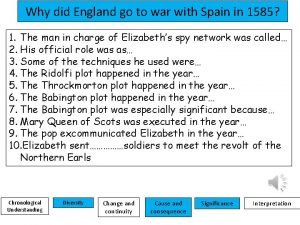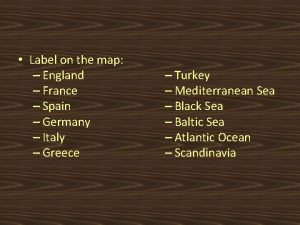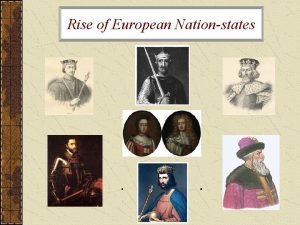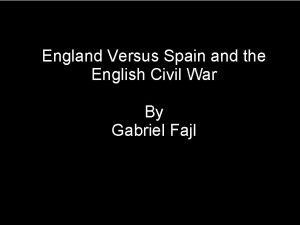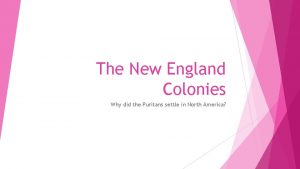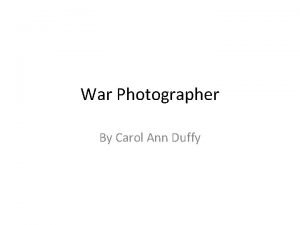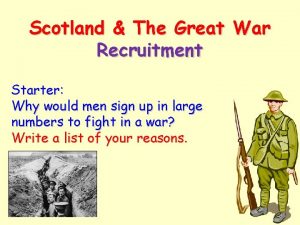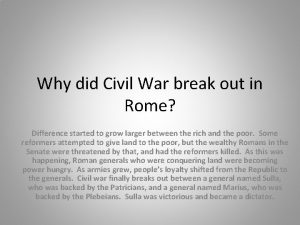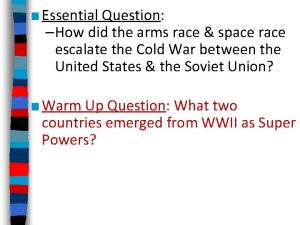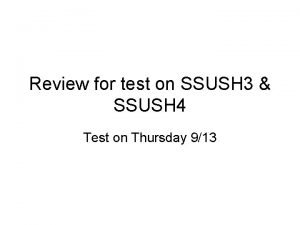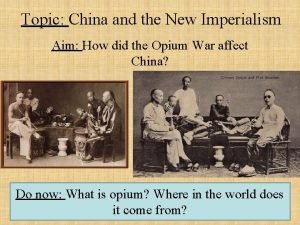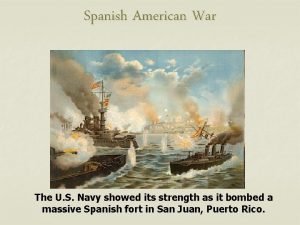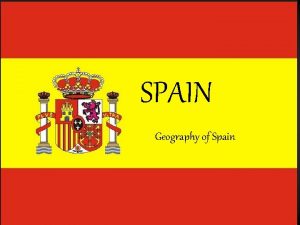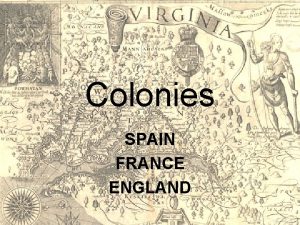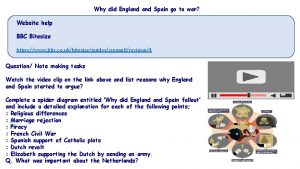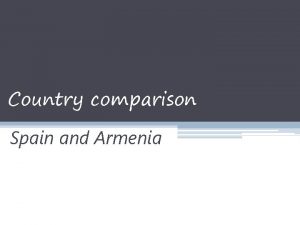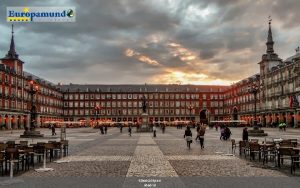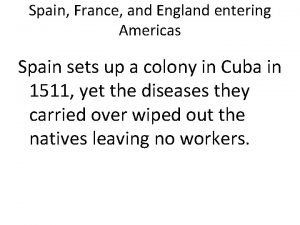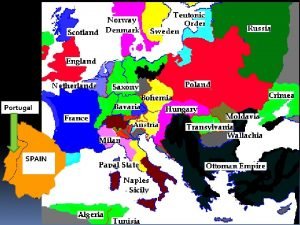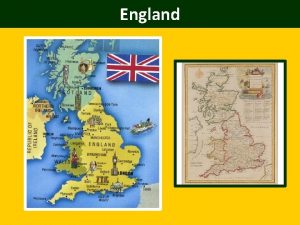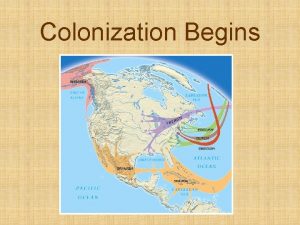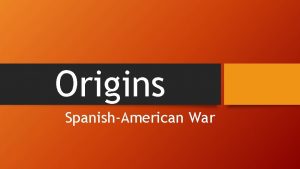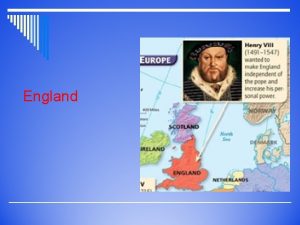Why did England go to war with Spain















- Slides: 15

Why did England go to war with Spain in 1585? 1. The man in charge of Elizabeth’s spy network was called… 2. His official role was as… 3. Some of the techniques he used were… 4. The Ridolfi plot happened in the year… 5. The Throckmorton plot happened in the year… 6. The Babington plot happened in the year… 7. The Babington plot was especially significant because… 8. Mary Queen of Scots was executed in the year… 9. The pop excommunicated Elizabeth in the year… 10. Elizabeth sent……………soldiers to meet the revolt of the Northern Earls Chronological Understanding Diversity Change and continuity Cause and consequence Significance Interpretation

1. The man in charge of Elizabeth’s spy network was called Sir Francis Walsingham 2. His official role was as Secretary of State 3. Some of the techniques he used were the use of interceptors, he used resealers to reseal intercepted letters, he employed code breakers and he used informants. 4. The Ridolfi plot happened in the year 1571 5. The Throckmorton plot happened in the year 1583 6. The Babington plot happened in the year 1586 7. The Babington plot was especially significant because it demonstrated Mary’s directed involvement and so led to her execution. 8. Mary Queen of Scots was executed in the year 1587 9. The pope excommunicated Elizabeth in the year 1571 10. Elizabeth sent 10, 000 soldiers to meet the revolt of the Northern Earls

Direct Vocabulary Instruction Rivalry Competition within the same area. Why was there such rivalry between England Spain? ‘Anglo-Spanish rivalry occurred for many reasons: religion, politics, trade and English involvement in the Netherlands’.

Ticket: Heads Up Explain why England went to war with Spain.

Over-Arching Enquiry Next to each category, rate on thermometer how significant a cause it was. Use the key in the bottom left corner. Religion Politics Trade Netherlands As we work our way through today’s lesson, you need to populate your page about the rivalries that England had with Spain. Were they mainly - religious? - Political? - Commercial? - To do with the Netherlands?

Religion From 1570: Spain & France: 1562, 64 & 68: 1572: 1579: Philip II: Politics Concerns over France: Trade Spanish Empire: Rebellion: Netherlands

Pirates and trade 1562 and 1564 slaving voyages: John Hawkins made two voyages, backed financially by many of Elizabeth’s courtiers. He sailed to West Africa and bought slaves, who he then took across the Atlantic and sold to the colonists of the New World. This was an illegal attempt to break into Spain’s trading empire 1568 – San Juan de Ulua On his third voyage transporting slaves, John Hawkins was attacked by the Spanish at San Juan de Ulua in Mexico. Hawkins lost 4 ships and over 300 men. One of the survivors was his cousin, Francis Drake. England retaliated by seizing a Spanish bullion ship carrying gold. Describe the slaving voyages of 1562, 64 & 68 Describe the piracy at Nombre de Dios in 1572 Describe what happened to the Cacafuego Stretch: How could these events have led to an Anglo-Spanish war?

1572 – Nombre de Dios Francis Drake knew that Spanish ships full of gold and silver were anchored at Nombre de Dios. He attacked the town with two ships and 100 men, and seized silver worth about £ 20, 000 (about £ 30 million in today’s money!) 1579 – The Cacafuego During his circumnavigation of the world, Francis Drake attacked Spanish settlements on the west coast of South America. In February 1579, Drake attacked Callao and attacked twelve Spanish ships, capturing large quantities of coins. He then heard that the Cacafuego, a Spanish treasure ship, had left harbour a few days earlier. Drake’s three ships pursued it and captured its cargo, worth £ 140, 000.

Religion Another argument is that religion was the most important reason for the outbreak of war. The religious rivalry was so great that it seemed to make war inevitable after Elizabeth set up a Protestant church in 1559, and after 1570 began to set up harsher penalties against Catholics. When Catholic priests began arriving in England this increased fears of a religious crusade. Philip II of Spain saw it as his mission to return countries to the Catholic church. However, Philip took no action when Elizabeth made England Protestant in 1559, nor when the Pope excommunicated Elizabeth in 1571. He did not go to war because he did not want war with England at that time, as you can see explained in the diagram. If religion was the cause of the war it was a longterm one. Philip had lived with a Protestant England for over 25 years before eventually going to war.

How did the Pope’s excommunication of Elizabeth affect relations between England Spain? How did the relationship between France & Spain distract Philip? Stretch: How could these events have led to an Anglo-Spanish war?

Politics Philip II, apart from being Catholic, was ruler of the most powerful country in the world. In addition to Spain itself, ruled the Netherlands (an important trading country) and owned land in South and Central America – the ‘New World’. Treasure from the New World made Spain very wealthy and Philip did not want anyone to challenge his power. However, he was more worried by France than he was England. Philip’s anxiety about the power of France meant that he preferred to have Elizabeth as Queen of England over Mary, Queen of Scots, who although Catholic, had very strong ties with France. If Mary were Queen, he feared that an alliance between England France would be likely. This is why although Philip was linked to plots against Elizabeth, there was never anything concrete. - Why has political rivalry been put forward as a cause for the war? - How could you argue against this being a significant cause?

The Netherlands Most historians now agree that the war with Spain was caused by English involvement in the Netherlands, which was part of Spain’s empire. The English channel was vitally important to both Elizabeth and Philip, for trade, security and, in Philp’s case, access to his territories in the Netherlands. In 1572, Protestants in the Netherlands rebelled against Spanish rule. The Dutch rebels asked their fellow Protestant Elizabeth for help when Philip II sent a huge Spanish army against them. This created a problem for Elizabeth, as her favourite, Robert Dudley, Earl of Leicester, and others argued for sending major help to the Dutch Protestants. Elizabeth sent money and weapons secretly to the rebels. However, in 1578 a larger Spanish army led by the Duke of Parma arrived. This worried Elizabeth to have a huge Spanish army so close to England. In 1584, the rebel leader William of Orange, was assassinated. This led to Elizabeth agreeing to direct involvement. How could these events have led to an Anglo-Spanish war?

Elizabeth signed the Treaty of Nonsuch in August, 1585 with the Dutch rebels. This meant she agreed to the following: • Elizabeth would take over the protection of the Netherlands • She would send an army of 7, 000 to help the rebels against the Spanish • England would pay for the costs of the army • In exchange for this assistance the English would be able to use Brill and Flushing (towns in the Netherlands) as bases for English soldiers Philip II saw Elizabeth’s involvement in the Netherlands as an act of war. In the same year, the two monarchs declared war upon one another.

Creating a Hypothesis Explain why England went to war with Spain. For each of the causes investigated today, complete a ‘thermometer’ to show much you believe that cause is responsible for the war with Spain. Justify each one with a short piece of explanation below: Eg. Religion was a ________ cause of war with Spain because… *inevitable/definite/likely/unrelated/ unlikely/probable/ possible etc.

Exit Ticket Explain why England went to war with Spain in 1585. Now, begin to rank the reasons against each other, ready to write an answer to the question above. Remember, this an ‘explain why…’ question so you’ll need 3 PEE paragraphs all giving a different reason as to why England went to war with Spain. One reason why England went to war with Spain in 1585 was… I know that… I also know that… Furthermore… This clearly led to war because…
 Why did england and spain go to war
Why did england and spain go to war France spain map
France spain map England france spain
England france spain England versus spain
England versus spain Why did the puritans settle in new england
Why did the puritans settle in new england Andreas carlsson bye bye bye
Andreas carlsson bye bye bye Why was the civil war considered the first modern war
Why was the civil war considered the first modern war Cold war 1947
Cold war 1947 Belfast. beirut. phnom penh
Belfast. beirut. phnom penh Two scots recruitment
Two scots recruitment Why did josette dugas want to go to war
Why did josette dugas want to go to war Why did civil war break out in rome?
Why did civil war break out in rome? Why did the arms race escalate during the cold war
Why did the arms race escalate during the cold war Ssush
Ssush England china war
England china war When did cuba gain independence from spain
When did cuba gain independence from spain
